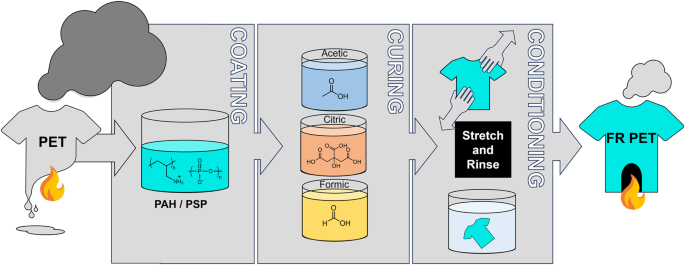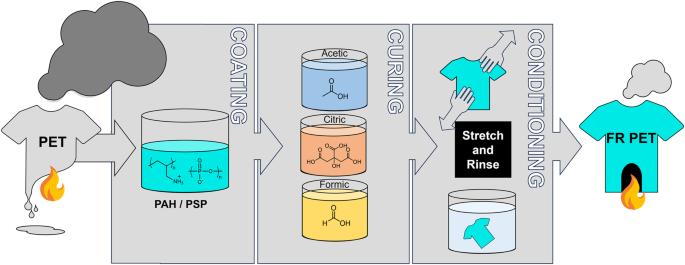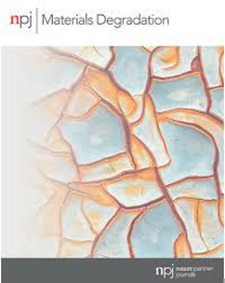用于自熄聚酯的缓冲诱导离子交联聚电解质处理技术
IF 6.6
2区 材料科学
Q1 MATERIALS SCIENCE, MULTIDISCIPLINARY
引用次数: 0
摘要
每年生产的聚对苯二甲酸乙二醇酯(PET)纤维超过 6000 万吨,用于制作服装、室内装潢、床单和地毯。尽管 PET 用途广泛,但其易燃性限制了它的多功能性,这对使用合成家具的家庭构成了特别的火灾危险。为了降低这种火灾风险,一种由聚烯丙基胺盐酸盐和聚磷酸钠组成的聚电解质复合物 (PEC) 溶液被沉积在 100% 聚酯纤维织物的表面,使其具有自熄性并消除熔体滴落。醋酸、柠檬酸或甲酸缓冲溶液用于引发离子络合,使 PEC 具有防水性。缓冲溶液的特性会影响沉积,但不会对膨胀机制产生重大影响。这种快速沉积的水性涂层主要通过促进产生隔热炭层来限制热量释放和聚酯降解为挥发性副产品。本文章由计算机程序翻译,如有差异,请以英文原文为准。


Buffer induced ionically crosslinked polyelectrolyte treatment for self-extinguishing polyester
Over 60 million tons of polyethylene terephthalate (PET) fibers are produced annually for clothing, upholstery, linens, and carpeting. Despite its widespread use, the versatility of PET is constrained by its flammability, which poses a particular fire hazard to homes with synthetic furnishings. To mitigate this fire risk, a polyelectrolyte complex (PEC) solution composed of polyallylamine hydrochloride and poly(sodium phosphate) is deposited onto the surface of 100% polyester fabric to render it self-extinguishing and eliminate melt dripping. A buffered solution of acetic acid, citric acid, or formic acid is used to initiate ionic complexation, rendering the PEC water resistant. Buffer identity affects deposition, but does not significantly influence the intumescent mechanism. This rapidly deposited aqueous coating primarily operates by facilitating production of an insulating char layer that limits the heat release and degradation of polyester into volatile byproducts.
求助全文
通过发布文献求助,成功后即可免费获取论文全文。
去求助
来源期刊

npj Materials Degradation
MATERIALS SCIENCE, MULTIDISCIPLINARY-
CiteScore
7.80
自引率
7.80%
发文量
86
审稿时长
6 weeks
期刊介绍:
npj Materials Degradation considers basic and applied research that explores all aspects of the degradation of metallic and non-metallic materials. The journal broadly defines ‘materials degradation’ as a reduction in the ability of a material to perform its task in-service as a result of environmental exposure.
The journal covers a broad range of topics including but not limited to:
-Degradation of metals, glasses, minerals, polymers, ceramics, cements and composites in natural and engineered environments, as a result of various stimuli
-Computational and experimental studies of degradation mechanisms and kinetics
-Characterization of degradation by traditional and emerging techniques
-New approaches and technologies for enhancing resistance to degradation
-Inspection and monitoring techniques for materials in-service, such as sensing technologies
 求助内容:
求助内容: 应助结果提醒方式:
应助结果提醒方式:


